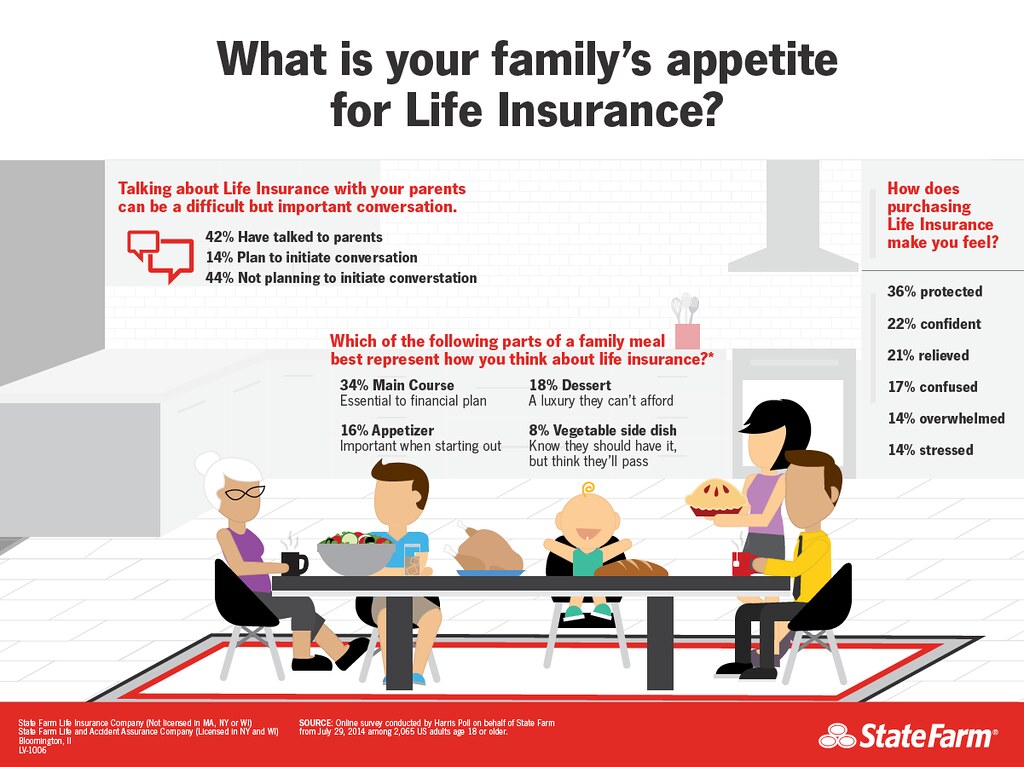That’s one of those things we know we need but perhaps don’t fully understand-life insurance. It’s like that mystery item in your car’s emergency kit-you know it’s important, but you’re not quite sure how to use it till the moment arrives.
This is very important when choosing term versus whole life insurance when considering life. One is a line of advantages and disadvantages, but also of financial implications-which falls on both sides. Let’s look at this like a project for you and me.
This would be to break down all of the options together so that you can make better choices for your future and your loved one’s future.
Understanding the Basics: What is Life Insurance?
Before getting on to term and whole life insurance, there is a need to clearly understand the basic premise of life insurance. This is essentially a contract between you and an insurance company.
You pay regular premiums, and in return the insurer agrees to pay a sum of money to your beneficiaries upon your death. The objective is simple: to provide some financial security for those dependent on your income.

What is Term Life Insurance?
Term life insurance is the less sophisticated of the two products. It provides coverage for a specified term-of-time-often 10, 20, or 30 years.
The essence of term life insurance is that one pays a premium at certain periods, say one year and up to twenty years. In case one dies when the term is still unexpired, the sum assured is taken care of by your beneficiaries. If one lives beyond the term then nothing goes to the beneficiaries because the policy automatically lapses.
Pros of Term Life Insurance:
- Cost: term life insurance is relatively cheaper in comparison to whole life insurance, especially to the youths. It provides the highest coverage amounts at a relatively cheap price.
- Easy money: There is no cash value component of term life insurance. Basically, you pay premiums and if you die before the term of the policy, then your beneficiaries receive the payout.
- Flexibility: Term policies can be modified in your best interests. You could be paying for the major events in your life, such as the payoff of your mortgage or college education for your children.
Cons of Term Life Insurance:
- Temporary Coverage: Once you have completed the term, then you will no longer be covered until you extend your insurance coverage again, which, of course, costs a little bit more.
- No Cash Value: Term insurance generates no form of cash values. Thus, when you survive the policy term, you never receive your money back.
- It will be costlier because if you renew a term policy after its expiry date, your cost for a premium gets affected by both changes in your age and health.
What is Whole Life Insurance?
So called because of its flexibility, whole life insurance is, as a matter of fact some sort of policy that stays active throughout one’s lifetime if premium payments are always made.
It also has a savings component referred to as cash value, which builds itself upon passage of time and could even be borrowed against or taken out.

Advantages of Whole Life Insurance:
- Lifetime Coverage: As long as you keep paying your premiums, your beneficiaries most definitely will be paid out at your death in whole life insurance; that’s a good night’s sleep.
- Cash Value Accumulation: Part of your premiums are deposited in a savings account that accrues and you can tap into either through loans or withdrawals.
- Fixed Premiums: For the most part, the premiums for a whole life insurance are fixed. Which simply means you will never face those shockers coming in the form of escalating costs because of aging.
Disadvantages of Whole Life Insurance:
- Costly: Whole life insurance is very cost-effective, compared to regular term life insurance. This can very disadvantagous to people with very tight budgets.
- Complexity: Because whole life has a cash value component combined with a wide range of policy options, it can be considered more complex than most others.
- Lower Cash Value Returns: As attractive as such a feature of whole life is, cash value returns are typically lower compared with any other type of investment.
Key Differences Between Term and Whole Life Insurance
Now that we have an understanding of what each is comprised of, let’s discuss what differentiates term from whole life insurance in the other columns.
| Feature | Term Life Insurance | Whole Life Insurance |
|---|---|---|
| Duration | Fixed term (e.g., 10, 20, 30 years) | Lifetime coverage |
| Cost | Lower premiums | Higher premiums |
| Cash Value | No cash value | Builds cash value over time |
| Flexibility | Can be converted to whole life in some cases | Fixed premium and payout structure |
| Investment Component | None | Cash value can be invested |
When to Choose Term Life Insurance
Term life insurance is generally when you wish to pay off specific financial obligations, which over time are going to be reduced in value. This is best for the following types of people: Young Families: Where you have children, and you want to have a plan in place to ensure your children’s financial security once you’re gone; hence, term life insurance coverage for them until they become fully grown up and are working.
Pay Off Your Debts: Whole life can serve as a cushion for paying off mortgages or other loans, such as funding a student education, so that such debts do not fall upon your survivors.
Price-Sensitive Customers: Those who are price-sensitive will be most sold whole life-the most insurance at the lowest initial cost.

When to Choose Whole Life Insurance
Whole life may be appropriate for individuals who need lifetime insurance coverage but also need cash values at the same time. Use it when you need the most permanent coverage. It would be the best choice when you: require a payout at whatever time you might die.
Estate Planning: In case a customer intends to leave a legacy or inheritance for estate tax purposes then one can be guided with a whole life insurance. It pays a return that pays for the costs to pay estate taxes in settling the estate.
Cash Value Use: If you are likely to want the cash value in the policy to use for loans or withdrawal then you will love this about a whole life.
Combined Both: Hybrid Inclusions
There is also a washing away of lines that suggests an in-between between term and whole life. Such a plan would be called a “laddering strategy,” where term life is used to replace short-term, high-value needs like a mortgage, but a small amount of whole life is used to fulfill long-term needs and to accumulate cash value.
The Bottom Line: Premiums and Affordability
And cost is one area that may be a consideration when comparing term life insurance with whole life insurance. Term life insurance typically costs less for its death benefit, meaning it is still within a more affordable range for most people. Whole life insurance is higher in cost for the pay-out over the entire life of a person and cash value as well.
Comparison of Example Costs:
For instance, a healthy nonsmoker 30-year-old individual would pay about $20 per month for the term policy to cover over a 20 year level term with a $500,000 death benefit.
He would have to pay over $200 per month to achieve the same death benefit amount in whole life coverage.
Consequently, whole life premiums are higher, but they do offer additional benefits through the avenue of cash accumulation and lifetime coverage guarantees.
Tax Benefits
Tax advantages also apply to term and whole life insurance. A death benefit received via life insurance is tax-free to the recipient of the proceeds. In addition, cash value in whole life insurance grows tax-deferred; that is, you pay no taxes on the appreciation until it is withdrawn.

Flexibility and Adaptability
- Term Life: Many term life policies allow the insured to convert that policy into a whole life without requiring a medical. That can be particularly helpful in the case of a change in your financial situation or at some later point in life to obtain permanent coverage.
- Whole Life: The insurance coverage stays for the whole lifetime of the insured. It cannot, however change the amount of death benefit thus fixed and does not alter the premium.
- The cash value can be loaned against thus providing a level of flexibility.
How We Built These Insights
Till now, our insurance experts have guided thousands of individuals and families in making their decision regarding life insurance. We ourselves know how proper choice would bring peace of mind as well as financial security but how improper choice would leave huge gaps in protection.
We derive our first-hand experience from realistic scenarios which encompass the most frequently asked questions and other queries that are generally sought when a decision between term life and whole life insurance is in question.
Using that very experience from me and some of the latest reviews of the industry, this guide was born to help you make the most informed decisions which will best work for your specific needs as well as long-term objectives.
Conclusion
And, by choosing term or whole life, you have chosen something that will make all the difference not only to your financial future but also to those closest to you.
Term life is relatively cheap, but again, you’re only insuring your life for a period of time to pay off a specific financial obligation, whereas whole life is permanent insurance with a built-in savings element. Make sure your decision will support your overall financial needs for your family and future plans.
Anyways, no one-size-fits-all policy: term or whole life, sometimes a mix of both, depending on what is best suited for your current stage in life and financial capacity. Then take time and assess your needs; you may or may not require professional insurance advice, then finally decide on the kind of protection that may give you peace of mind.


Leave a Reply